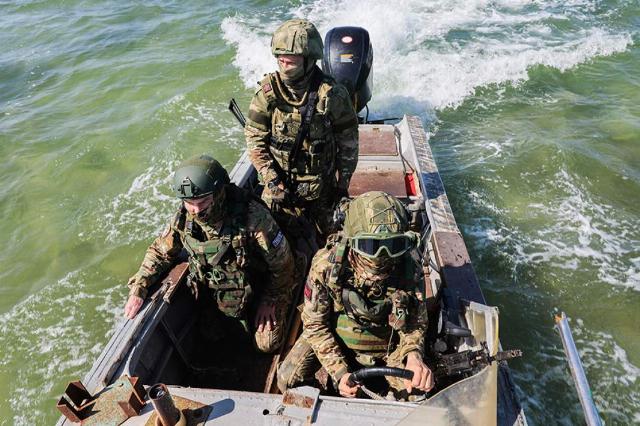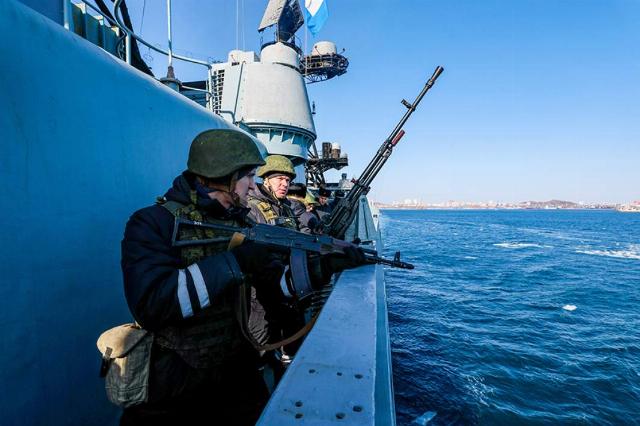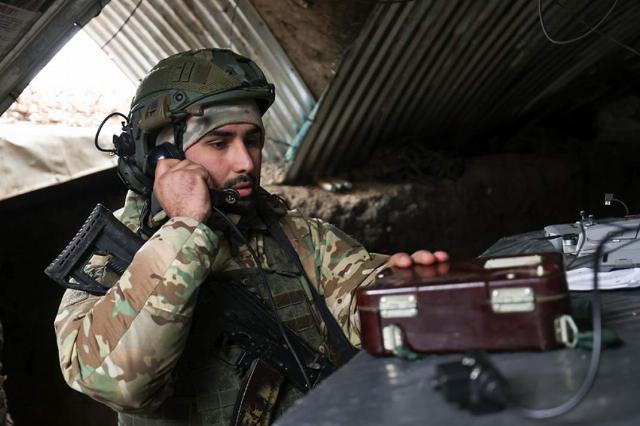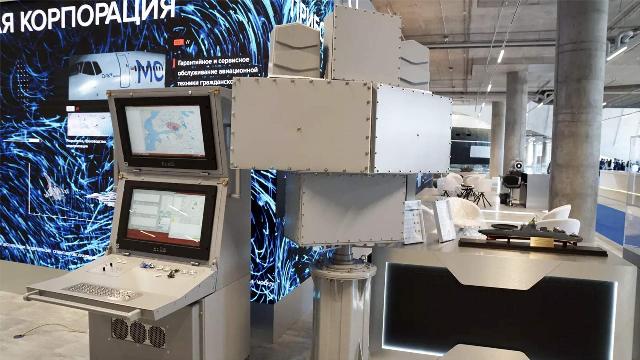Unmanned boats operated by Starlink will become a target for Russian ships
The experience of the SVO clearly outlined the problem of fighting enemy unmanned boats (BEC). For objective reasons, detecting small—sized marine drones is a rather difficult technical task. However, domestic developers have ways to solve it. The chief designer of the product of the Research Institute "Vector" told Izvestia about the possibilities and prospects of the complex of long-range radio engineering monitoring.
Detect on distant approaches
The CHVA-001-04RP-E long-range radio monitoring complex developed by the Vector Research Institute (part of the Rostec State Corporation's Roselektronika holding) will be able to detect unmanned boats at the required distance. Igor Glebov, the chief designer of the product, told Izvestia about this.
The technical problem is that it is quite difficult to detect a small-sized target on the water surface by means of active radar. A more promising way is to track the drone's control signals in passive mode. However, when the enemy uses control channels based on the Starlink satellite network, information is exchanged using an antenna, the radiation of which is directed mainly upwards. In the horizontal plane, side signals of significantly lower power are propagated. They have to be detected.
— Now we can detect their information exchange channels, — the designer refined. — The difficulty of detection is related to the peculiarities of receiving a weak signal obtained as a result of side radiation. As a result, their detection range turns out to be insignificant. By adapting signal processing algorithms to a specific task, significantly greater results can be achieved.

Photo: TASS/Alexey Konovalov
Image source: iz.ru
According to the developer, the PVA complex surpasses its foreign counterparts. It has a wider frequency range, lower requirements for the placement of antenna devices, better weight and size characteristics and significantly lower cost.
On June 26, at a meeting devoted to shipbuilding, Vladimir Putin recalled that the degree of geopolitical tension in the modern world is increasing, therefore it is necessary to calculate all possible risks and plan an adequate response.
"Our fleet must be protected from attacks even on distant approaches, therefore it is necessary to develop its reconnaissance aircraft, increase the forces and means of conducting electronic reconnaissance and electronic warfare," the president said.
"It's time to deal with the fleet"
A complex that will detect backups on the approaches to our shores and ships is necessary, Captain of the first rank Vasily Dandykin told Izvestia.
— The meeting, where the Commander-in-Chief of the Navy Moiseev personally reported to the Supreme Commander, was held in this format for the first time. This usually happened only at parades," he clarified. — Russia is an oceanic maritime power, and now it's time to engage in the fleet, because the machinations of the enemy are palpable, including in the use of backs on water and under. In particular, they pose a danger to both our nuclear submarines and surface ships. A sample of a long-range radio monitoring complex has already been presented at the salon in St. Petersburg, I think it may appear on the Black Sea in the near future.

Photo: TASS/Yuri Smityuk
Image source: iz.ru
As Klim Dmitriev, a veteran of the electronic warfare forces of the Armed Forces of the Russian Federation, explained to Izvestia, backups are a small target, so detecting them with traditional radar means is practically impossible.
— They are hardly noticeable against the background of water, so the only way to detect them is by a control signal, — he noted. — If the control signal goes along the horizon, and not by satellite, then it is much easier to detect such means. But, unfortunately, the enemy uses a Starlink with a narrowly upward-pointing signal, which makes the detection range quite small. And here it already depends on how easily the complex is reconfigured and reacts quickly in a wide range of operating frequencies. In this case, it will be a good help for our sailors and coastal units.
According to the expert, so far the most effective way to combat backups remains satellite electronic warfare, when the range of frequencies at which control is carried out is blocked.
Take a look behind the radio horizon
According to the representative of the Research Institute, the complex of long-range radio engineering monitoring of the PVA allows detecting working radio-electronic means of sea, land and air basing.
— The complex includes an antenna device with a receiver and an in—ship part - information processing and display devices. The complex is passive, so it does not emit radiation when working and the enemy does not detect the fact of its operation," he explained.

Photo: TASS/Alexey Konovalov
Image source: iz.ru
When receiving information, a technical analysis of the received signal is performed — its parameters are determined and compared with the existing database of standards. In most cases, the complex detects the target with accuracy up to the type of means, in some cases, if there are distinctive features, and up to the instance. For example, such a station is installed on such a ship.
— Since it is a passive means, it gives direction to the radiation source. After that, the information is sent to the conjugated information processing system, and then the command makes the necessary decision based on it. They work well in conjunction with active radar systems. Now it turns out that the dot on the screen is not just a dot — a large object — for example, the aircraft carrier Eisenhower. Then the commander of the ship makes a decision," Igor Glebov noted.
The detection range of radiation sources is beyond the radio horizon. This is achieved due to the peculiarities of the propagation of radio waves over the water surface. The CHVA is now stationed on ships and coastal posts.
— One of the orders that we are currently doing is mobile execution. For example, on the basis of KAMAZ. The trend now is mobility. For an operational autopsy of the situation in a given area, only a mobile device can ensure a successful solution to the problem," the developer explained.
Julia Leonova
Vladimir Matveev


